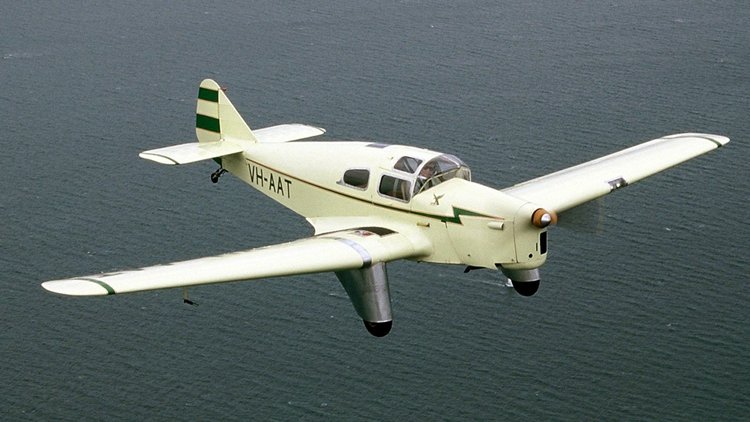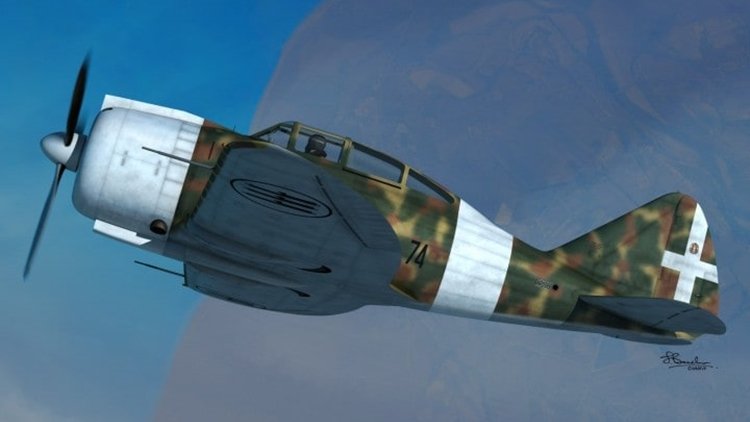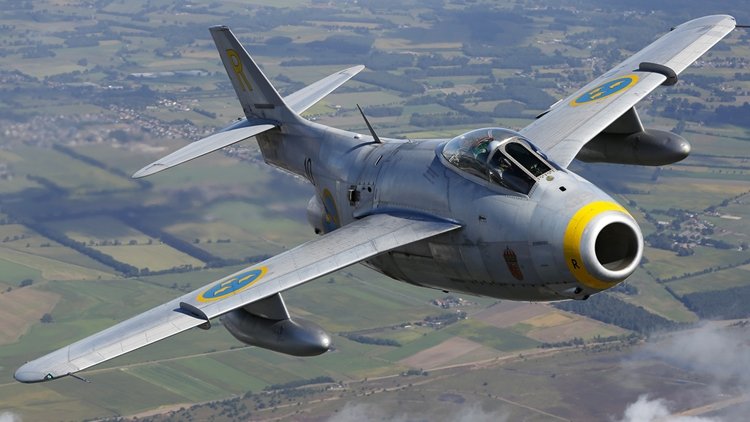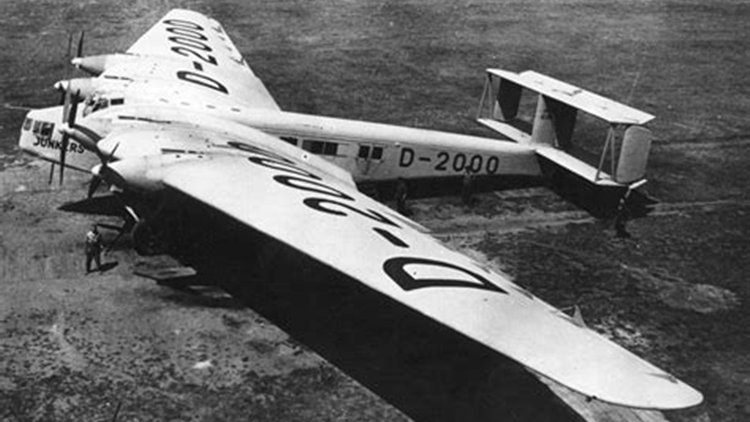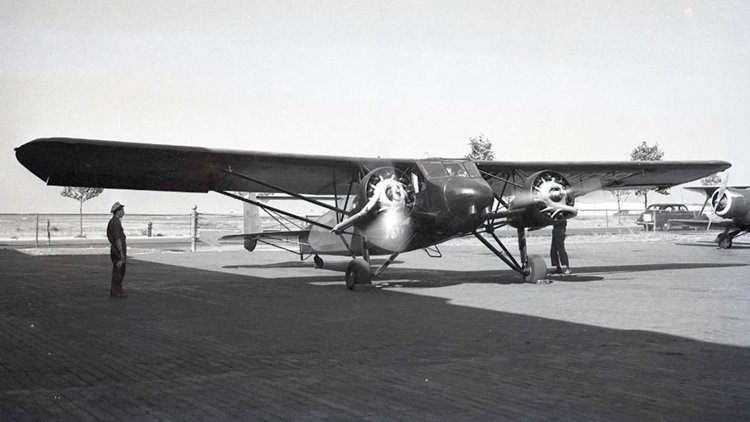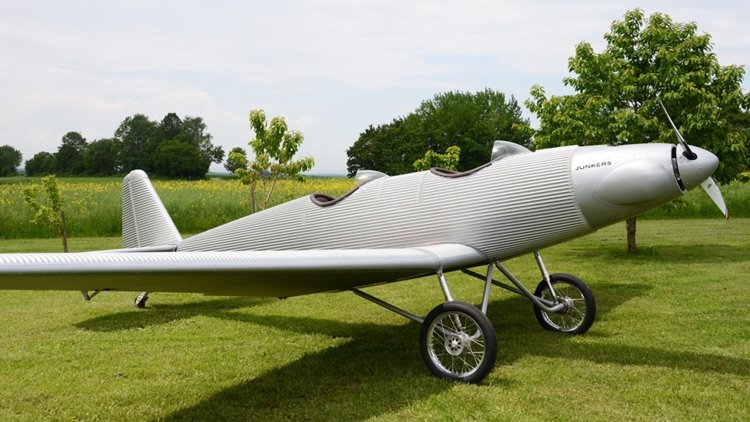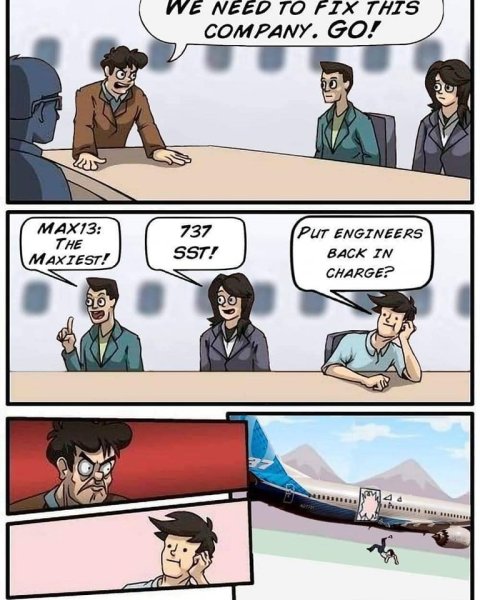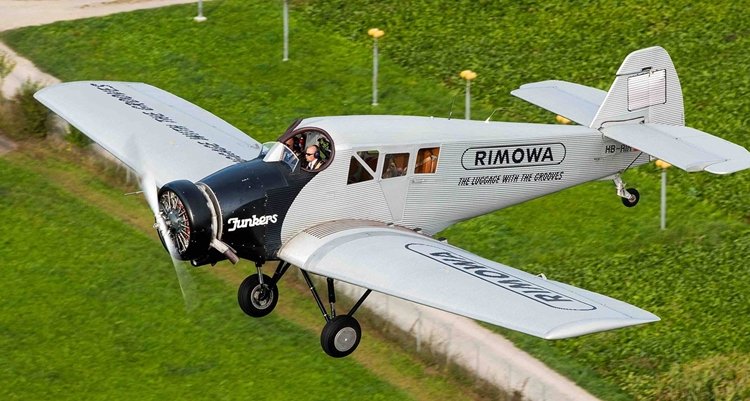-
Posts
7,574 -
Joined
-
Last visited
-
Days Won
67
Content Type
Profiles
Forums
Gallery
Downloads
Blogs
Events
Store
Aircraft
Resources
Tutorials
Articles
Classifieds
Movies
Books
Community Map
Quizzes
Videos Directory
Everything posted by red750
-
The M.3 Falcon was a clean, single engined low-wing monoplane with trousered main undercarriage and fixed tail-wheel, designed in 1934. It was structurally similar to the earlier Miles M.2F Hawk Major family, but had side-by-side seating for two behind the pilot in a glazed cockpit. It was powered by a 130 hp (97 kW) de Havilland Gipsy Major piston engine. The prototype, G-ACTM, built by Philips and Powis first flew at Woodley Aerodrome on 12 October 1934. The first production aircraft (designated M.3A Falcon Major) was flown in January 1935. It had a wider fuselage than the prototype to improve passenger comfort and revised glazing with a forward sloping windscreen. The M.3A was somewhat underpowered, so the (M.3B Falcon Six) and later versions were fitted with a 200 hp (150 kW) de Havilland Gipsy Six engine. The M.3C Falcon Six was a four seater with dual controls. The M.3D was strengthened to allow an 11% increase in all up weight compared with the M.3B. The final versions were the M.3E and M.3F. An enlarged five-seat version was developed as the M.4 Merlin. The prototype was fitted with extra fuel tanks and entered into the MacRobertson Race from England to Australia in October 1934. It took 27 days to reach Darwin, but returned in a record time of 7 days 19 hours 15 minutes, including one stage of 1,800 miles (2,900 km) non-stop from Jodhpur to Basra. Pre war, three Falcon Sixes appeared in RAF garb at the Royal Aircraft Establishment (RAE) for trials of a variety of wings and aerodynamic innovations. At the outbreak of the war three aircraft remained civilian as communications aircraft with various companies but, like so many civil aircraft ten others were impressed into service by the Royal Air Force, Royal Navy, the Royal Australian Air Force and the Swedish air force. The RAAF operated 3 Miles Falcons. Six Falcons survived the war, one of which was used by the RAE to test the wing of the Miles M.52. Variants M.3 Prototype three-seat version with a 130 hp de Havilland Gipsy Major engine. 1 built. M.3A Falcon Major Production four-seat version with a 130 hp de Havilland Gipsy Major engine. 18 built M.3B Falcon Six Three-seat version with a 200hp de Havilland Gipsy Six engine. 11 built, including 1 Falcon Six designated M.3, but not including 2 M.3Bs later converted to M.3E and F. M.3C Falcon Six Four-seater with dual controls with a 200 hp de Havilland Gipsy Six engine. 1 built. M.3D Strengthened variant with a 200 hp de Havilland Gipsy Six engine. 3 built. One was a converted M.3B. M.3E Variant with a 200 hp de Havilland Gipsy Six engine. 1 built but uncertified. M.3F A former M.3B modified for Fairey wing, spoiler and retractable aileron trials with the RAE, R4071.[5] Miles Gilette Falcon A single aircraft modified for the M.52 program.
-
The Reggiane Re.2000 Falco I was an Italian all metal, low-wing monoplane developed and manufactured by aircraft company Reggiane. The type was used by the Regia Aeronautica (Italian Air Force) and the Swedish Air Force during the first part of the Second World War. The Re 2000 was developed by a team headed by aircraft designers Roberto Longhi and Antonio Alessio to be a lightly-built and highly maneuverable interceptor/fighter aircraft. The emergent design, which had been designated as the Re 2000 Falco I, was equipped with a Curtiss-Wright-style retractable undercarriage, bore substantial similarities to the American-built Seversky P-35. On 24 May 1939, the prototype performed its maiden flight. Flight testing of the prototype revealed it to be able to outfight several significant combat aircraft of the time, including even the more modern Macchi C 200 and the German Messerschmitt Bf 109E fighters. During the run up to and following the outbreak of the Second World War, the aircraft was ordered by several nations, including the Hungarian, Swedish, British and Italian governments. Upon entering squadron service, the Re 2000 soon proved to be a technically advanced aircraft, being well balanced and extremely aerodynamic during flight, but was not without its faults. Although the aircraft was potentially superior to Italian contemporary fighters (Fiat G 50 and Macchi C 200), the Re 2000 was not considered to be satisfactory by Italian military authorities. Consequently, the manufacturer built the type for export and almost all of the first production served with the Swedish Air Force and Hungarian Air Force, rather than in the Regia Aeronautica. The Re.2000 served as the starting point for several derivatives, including the MÁVAG Héja, Reggiane Re.2001, Re.2002, Re.2003, Re.2004, Re.2005, Re.2006 and Re.2007 combat aircraft. The Reggiane Re.2000 is an Italian all metal, low-wing monoplane fighter aircraft. It is the first aircraft to be designed by Reggiane to employ aluminum stressed skin construction, as opposed to the wooden or mixed wood and metal structures that had been traditionally used in contemporary Italian aircraft such as the Savoia-Marchetti SM.79 (which had been previously produced by Reggiane under license). The stressed skin fuselage was highly streamlined, save for the protrusions of the hard-rivetted finish. The majority of the aircraft's exterior, including the tail, was metal-skinned; however, the control surfaces had fabric coverings. The aircraft was furnished with an elliptical wing, the internal structure of which comprised a multi-cell configuration using a total of five spars, stress-skin covering, and integral fuel tanks within the center section. The wing made use of a modified N.38 airfoil section and was outfitted with Frise-type ailerons complete with static and aerodynamic balance, along with a split-continuous flap.[6] The cockpit of the Re.2000 featured a large backwards-sliding canopy; it is claimed that this canopy provided "almost unrestricted all-round visibility". For more extensive details of development, design, operational history and variants, click here. There were five Italian variants with a total of 186 built, and three variants built under licence in Hungary under the name Mavag Héja of which 204 were built.
-
The Saab 29 Tunnan (The Barrel), colloquially also Flygande Tunnan (The Flying Barrel), is an early jet-powered fighter aircraft designed and produced by the Swedish aircraft manufacturer Saab. It was the second turbojet-powered combat aircraft to be developed in Sweden, the first being the Saab 21R, and it was the first Western European fighter to be produced with a swept wing after the Second World War, only being preceded in Western Europe as a whole by the Messerschmitt Me 262 built during the conflict. Work on what would become the Tunnan commenced in late 1945. The design, internally designated R 1001, had a barrel-like fuselage, giving it a destinctive rotund appearance, from which its name is derived. A relatively thin swept wing configuration was adopted after wartime aerodynamic research from Germany indicated its favourable high speed qualities. It was powered by the recently-developed de Havilland Ghost turbojet engine. The Swedish Air Force placed an initial order for three prototypes under the service designation J 29 during Autumn 1946. On 1 September 1948, the first prototype performed its maiden flight; flight testing proved the aircraft to exceed performance estimates in several aspects. During May 1951, Bråvalla Wing (F 13) received the first production aircraft. Five principal variants of the Tunnan were produced; the first model to enter service being the J 29A fighter, the more capable J 29B and J 29E fighters, and finally the afterburner-equipped J 29F fighter, which was the final fighter variant to be built. A dedicated aerial reconnaissance model, the S 29C, was also operated. During the 1960s, several J 29Bs saw combat while were stationed in the Republic of Congo as Sweden's contribution to a UN peacekeeping mission (ONUC). The Austrian Air Force also operated the type. In service, the J 29 proved to be relatively fast and agile. The Swedish Air Force operated the type in both fighter and fighter-bomber roles into the 1970s. The Saab 29 Tunnan was the first Swedish aircraft to be specifically designed to use jet propulsion. Sweden's first jet fighter, the Saab 21R, had been modified from the piston-engined Saab 21. It is a small, chubby aircraft with a single round air intake in the nose, with the pilot under a bubble canopy directly above the air intake duct on the upper-forward section of the fuselage. It has a very thin mid-mounted moderately swept two-spar wing which is a single structure attached to the fuselage by four bolts. The undercarriage is hydraulically operated, and was designed to be suitable for use from rough airstrips. To improve pilot survivability, the Tunnan used an ejection seat Saab developed in 1943, with an explosive jettisoning system for the canopy. The Tunnan is powered with a single 22.4 kN (5,000 lbf) de Havilland Ghost turbojet which have a top speed in excess of 1,050 km/h (650 mph), better performance than Sweden's de Havilland Vampires. The engine was bolted to the fuselage at three points and a special trolley was used to remove the engine for maintenance. The final version had an afterburner, the first successful one used with a British jet engine. A total of 661 units were built. Improvements were made to the wing to incorporate a dog-tooth leading edge, raising the critical Mach number. From 1963 onwards, all frontline J 29Fs were equipped with AIM-9 Sidewinder infrared-seeking air-to-air missiles. For details of development, operational history and variants, click here.
-

Light aircraft crash Hervey Bay 31/01/2024
red750 posted a topic in Aircraft Incidents and Accidents
A report of a light aircraft crashing in Queensland after making a radio call over Hervey Bay. The pilot escaped with a cut over the eye, but the aircraft caught fire and was destroyed. No other details available at time of writing. -
The Republic XF-91 Thunderceptor (originally designated XP-91) is a mixed-propulsion prototype interceptor aircraft, developed by Republic Aviation. The aircraft would use a jet engine for most flight, and a cluster of four small rocket engines for added thrust during climb and interception. The design was largely obsolete by the time it was completed due to the rapidly increasing performance of contemporary jet engines, and only two prototypes were built. One of these was the first American fighter to exceed Mach 1 in level flight. A unique feature of the Thunderceptor was its unusual inverse tapered wing, in which the chord length increased along the wing span from the root to the tip, the opposite of conventional swept wing designs. This was an attempt to address the problem of pitch-up, a potentially deadly phenomenon that plagued early high-speed models. The Thunderceptor's design meant the entire wing stalled smoothly, more like a straight-wing design. More details.
-
The Junkers G.38 was a large German four-engined transport aircraft which first flew in 1929. Two examples were constructed in Germany. Both aircraft flew as a commercial transport within Europe in the years leading up to World War II. During the 1930s, the design was licensed to Mitsubishi, which constructed and flew a total of six aircraft, in a military bomber/transport configuration, designated Ki-20. The G.38 carried a crew of seven. Onboard mechanics were able to service the engines in flight due to the G.38's blended wing design, which provided access to all four power plants. The first Junkers prototype—3301 and marked as D-2000—first flew on 6 November 1929 with four gasoline engines: two Junkers L55 V-12 engines and two 294 kW L8 inline-6 engines, with a total power rating of 1470 kW (1971 hp). The Reich Air Ministry purchased the D-2000 for demonstration flights, and took delivery on 27 March 1930. In flight tests, the G.38 set four world records including speed, distance and duration for airplanes lifting a 5000 kg payload. On 2 May 1930 Luft Hansa put the D-2000 into commercial service for both scheduled and chartered flights. Structurally the G.38 conformed to standard Junkers' practice, with a multi-tubular spar cantilever wing covered (like the rest of the aircraft) in stressed, corrugated duraluminium. The biplane tail, found in other large aircraft of the time, was intended to reduce rudder forces; initially there were three rudders with only a central fixed fin. The undercarriage was fixed, with double tandem main wheels that were initially enclosed in very large spats. The wing had the usual Junkers "double wing" form, the name referring to the full span movable flaps which served also as ailerons in the outer part. On 2 February 1931 the Leipzig-based Junkers' yard re-engined the D-2000 with two Junkers L8 and two L88 engines, giving a total power rating of 1764 kW (2366 hp) and increasing passenger capacity from 13 to 19. During its early life the G.38 was the largest landplane in the world. Passenger accommodation was sumptuous by today's standards and was meant to rival that found on the competing Zeppelin service offered by DELAG. The plane was unique in that passengers were seated in the wings, which were 1.7 m (5 ft 7 in) thick at the root. There were also two seats in the extreme nose. The leading edge of each wing was fitted with sloping windscreens giving these passengers the forward-facing view usually available only to pilots. There were three 11-seat cabins, plus smoking cabins and washrooms. In design terms the G-38 followed the blended wing body design pioneered by Louis de Monge, later followed by Vincent Burnelli in his UB14 and later CBY-3 designs, and even later considered by both NASA and Boeing as an alternative to traditional tube and wing aircraft configurations. Only two units were built. For operational history, click here.
-
The Curtiss Model 55 Kingbird was an airliner built in small numbers in the United States in the early 1930s. It was a twin-engine aircraft with a fuselage derived from the single-engine Curtiss Thrush. The Kingbird had two engine nacelles mounted on the struts on either side of the fuselage that braced the wing and the outrigger undercarriage. A distinctive design feature was the aircraft's blunt nose, located behind the propeller arcs. This allowed the engines to be mounted closer to each other and to the aircraft's centerline, therefore minimising asymmetrical thrust in case of an engine failure. For the same reason, the Thrush's single tailfin was replaced by twin tails on the Kingbird, and the main production model, the D-2 fitted a second horizontal stabilizer and elevator between these fins. Eastern Air Transport was to be the Kingbird's main operator, flying 14 of them for a few years. The United States Marine Corps also purchased an example, first designating it JC-1, then RC-1 and using it as an air ambulance. Variants Kingbird C Prototype powered by 185 hp (138 kW) six-cylinder Curtiss R-600 Challenger engines. One built, but found to be underpowered. Later converted to Kingbird J-1. Kingbird D-1 Second and third prototypes (previously Kingbird J-3 and J-2) powered by 225 hp nine-cylinder Wright Whirlwind J-6-7 radial engines. Later converted to D-2 standard. Kingbird D-2 (Specifications below) Production aircraft with two 300 hp (224 kW) Whirlwind J-6-9 engines. 14 built plus two converted from D-1s. Kingbird D-3 One-off Curtiss executive transport. Two 330 hp (246 kW) Whirlwind J-6-9 engines. Seats for five passengers. Kingbird J-1 First prototype after re-engining with Whirlwind engines. Kingbird J-2 Third prototype, J-6-7 engines. Kingbird J-3 Second prototype, J-6-9 engines. RC-1 Single Kingbird D-2 for US Navy, originally ordered as JC-1 (J for utility), but delivered as RC-1 (R for transport).
-
The Junkers A50 Junior was a German sports plane of the 1930s. The Junkers A50 was the first sportsplane designed by Hermann Pohlmann in Junkers works It had the same modern all-metal construction, covered with corrugated duralumin sheet, as larger Junkers passenger planes. The first flight of the A50 took place on 13 February 1929. It was followed by further four prototypes, in order to test different engines. Junkers expected to produce 5,000 aircraft, but stopped after manufacturing only 69, of which only 50 were sold. The high prices probably inhibited sales. Apart from Germany, they were used in several other countries and some were used by airlines. The purchase price in 1930 in the United Kingdom was between £840 and £885. Starting from the A50ce variant, the wings could be folded for easier transport. Three German A50 took part in the Challenge international touring plane competition in July 1929, taking 11th place (A50be, pilot Waldemar Roeder) and 17th place. Three A50 took part also in the Challenge 1930 next year, taking 15th (A50ce, pilot Johann Risztics), 27th and 29th places. In June 1930 a series of eight FAI world records for altitude, range and average speed were set on a floatplane variant of A50 with the Armstrong Siddeley 59 kW (79 hp) engine. In 1931 Marga von Etzdorf flew an A50 solo from Berlin to Tokyo, the first woman to do so. Metal construction sports plane, conventional in layout, with low cantilever wings, stressed corrugated duralumin covered. Two-spar wings were folding rearwards or could be detached. Crew of two, sitting in tandem in separate open cockpits (if it flew without a passenger, one cockpit could be closed with a cover). Two-blade propeller. Conventional fixed split axle mainwheel landing gear, with a rear skid. New production In 2022, Junkers Aircraft Works began production of a modernized version of the A50. This new A50 features modern avionics, a 100 hp Rotax 912iS engine driving a composite MT-Propeller, and a ballistic parachute. As of May 2023, 27 new A50s have sold in Europe, and plans have been made for WACO Aircraft Corporation to produce aircraft for American customers. Variants A50 - Armstrong Siddeley Genet 59 kW (79 hp) radial engine A50ba - Walter Vega 63 kW (84 hp) radial engine (one built) (Specifications below) A50be - Armstrong Siddeley Genet 59 kW (79 hp) engine A50ce - Armstrong Siddeley Genet II 63 kW (84 hp) engine or for export Genet Major I 74 kW, folding wings A50ci - Siemens-Halske Sh 13, 65 kW (87 hp) radial engine, folding wings. Originally designed to be mass-produced as a "Volksflugzeug". A50fe - Armstrong Siddeley Genet II, 63 kW (84 hp) engine, modified airframe, folding wings KXJ1 - A single Junkers A-50 supplied to the Imperial Japanese Navy Air Service for evaluation. The -ce and -ci variants were produced in the largest numbers with about 25 of each on the German civil register.Due to their construction, the A50 were durable aircraft and they lasted long in service. The last plane was used in the 1960s in Finland. There is one A50 preserved in Deutsches Museum in Munich and another in Helsinki airport. One A50 (VH-UCC, c/n 3517) is in airworthy condition in Australia.
-
The Junkers Ju 60 was a single engine airliner built in prototype form in Germany in the early 1930s. It was designed to meet a requirement issued by the Reichsverkehrsministerium (Reich Transport Ministry) for a German-built equivalent to the Lockheed Vega with which to equip Deutsche Luft Hansa. The result was a sleek, cantilever monoplane of conventional configuration, with wings skinned in the corrugated duralumin that had been a hallmark of Junkers designs up to this time, although this would be the last Junkers aircraft to have this feature. The main units of the tailwheel undercarriage were retractable. The Ju 60 was evaluated by Deutsche Luft Hansa against the Heinkel He 70. With the latter able to demonstrate a top speed 75 km/h (47 mph) better than the Ju 60, development of the Junkers design was halted before the third prototype had been completed. The two examples that had already been constructed eventually saw service with the Luftwaffe as liaison aircraft until 1942. The work done on the design would later form the basis of the Ju 160.
-
-
The Junkers F 13 was the world's first all-metal transport aircraft, developed in Germany at the end of World War I. It was an advanced cantilever-wing monoplane, with enclosed accommodation for four passengers, and a two seat open-air cockpit. 322 planes of the type were manufactured, which was exceptionally large number for a commercial airliner of the era, and were operated all over the globe. It accounted for over a third of air traffic in the early 1920s. It was in production for thirteen years and in commercial service for more than thirty. There were many versions including floatplanes for water landing, skis, mailplane, and different engines. Several survived in various states of repair in museums, and a replica of the type was put back in production in the 2010s;taking flight once again nearly a century after it first flew. The F 13 was a very advanced aircraft when built, an aerodynamically clean all-metal low-wing cantilever (without external bracing) monoplane. Even later in the 1920s, it and other Junkers types were unusual as unbraced monoplanes in a biplane age, with only Fokker's designs of comparable modernity. It was the world's first all-metal passenger aircraft and Junkers' first commercial aircraft. The designation letter F stood for Flugzeug, aircraft; it was the first Junkers aeroplane to use this system. Earlier Junkers notation labelled it J 13. Russian-built aircraft used the designation Ju 13. Like all Junkers duralumin-structured designs, from the 1918 J 7 to the 1932 Ju 46, (some 35 models), it used an aluminium alloy (duralumin) structure entirely covered with Junkers' characteristic corrugated and stressed duralumin skin. Internally, the wing was built up on nine circular cross-section duralumin spars with transverse bracing. All control surfaces were horn balanced. Behind the single engine was a semi-enclosed cockpit for the crew, roofed but without side glazing. There was an enclosed and heated cabin for four passengers with windows and doors in the fuselage sides. Passenger seats were fitted with seat belts, unusual for the time. The F 13 used a fixed conventional split landing gear with a rear skid, though some variants landed on floats or on skis. The F 13 first flew on 25 June 1919, powered by a 127 kW (170 hp) Mercedes D IIIa inline upright water-cooled engine. The first production machines had a wing of greater span and area and had the more powerful 140 kW (185 hp) BMW IIIa upright inline water-cooled motor. For more details of the development and design, operational history, variants and replicas under construction, click here. Three examples came to this region. An F 13ke VH-UTS (c/n 2074 – ex SE-AEC) was operated by the Lutheran Mission from 27 February 1935, later going to the Rheinische Mission in Dutch New Guinea in September 1939. The second aircraft, an F 13L, VH-UKW (c/n 2044), was imported by Eyre Peninsula Airways Ltd, arriving in Melbourne, VIC on 19 June 1929 from Hamburg. It was used on passenger services for a period, including a service to Broken Hill, NSW, which commenced on 15 January 1930. It was then used by Goldfields Air Navigation Ltd of Kalgoorlie, WA. In December 1931 VH-UKW was obtained by Guinea Airways for passenger and mail services between the Goldfields and Port Moresby, PNG. At about this time the 287 kw (385 hp) Junkers L-5 engine was replaced by a 336 kw (450 hp) Bristol Jupiter engine for fleet standardisation. It continued in service in New Guinea but was not evacuated at the time of the Japanese attacks, being destroyed by enemy action in March 1942. The third aircraft, also an F 13L, VH-UPL (c/n 2075), was imported by Bishop & O’Sullivan Aircraft Service which operated as Sky Travel (Australia) Pty Ltd. It arrived on board the ‘SS Tancred’ on 28 October 1930 and was assembled at Essendon, VIC. It was the first aircraft in Australia equipped for night flying. It was test flown on 1 November 1930 by Captains W Roethe and T R Young at Point Cook, VIC and, named ‘Glorious Queensland’, was flown to Brisbane, QLD, arriving on 1 November 1930. VH-UPL was flown to Sydney, NSW, then back to Eagle Farm, QLD, and commenced a weekly passenger service from Brisbane to St George, QLD and twice weekly services to a number of other centres, at Goondiwindi, QLD using a salt pan for a landing strip. It also made joyflights to promote the service. However, services were suspended on 15 February 1931 due to lack of patronage and the aircraft was flown to Melbourne. Whilst flying in bad weather over the Bethungra Ranges on 28 August 1931 the magneto drive on the engine failed and a forced landing was made at Illabo, NSW, where repairs were effected. After arrival in Melbourne it was dismantled and shipped to South Africa, where it became ZS-ADR in June 1932 with Union Airways.
-
The Wickham B is an American experimental twin engined, homebuilt aircraft. The twin engine aircraft was designed by Boeing engineer Jim Wickham in order to fly safely on one engine over the Seattle area. The model B is a high-wing, fixed tricycle landing gear, twin engine aircraft. The aircraft uses all aluminum construction with fiberglass cowlings, nose cone and wheel pants. The wings are configured with Fowler flaps. The wing has no dihedral. The two 25 U.S. gallons (95 L; 21 imp gal) fuel tanks are located in the leading edges of the outboard panels just outboard of the engines. The fuel tanks are independent of each other with no cross feed capability or fuel lines in the cabin. The aircraft uses a throw-over yoke control, similar to a Beechcraft Bonanza. Design of the aircraft was started in December, 1957 and first flew in April, 1968. Initially the engines were 125 hp Lycoming O-290's but were subsequently changed to 150 hp Lycoming O-320 engines. The Wickham B was donated to the Seattle Museum of Flight, then traded to the South Seattle Community College. In 2002, the aircraft was sold and restored to flying condition by Ross Mahon in Everett, Washington. In 2012 the plane was sold to Curtis Clark and it is based at Deer Valley Airport in Phoenix, Arizona. Only the one was built. For specifications, click here.
-
I looked back at all posts in this topic and realised I hadn't posted about my first solo, although I have commented on navex's. Mine was quite uneventful. First up, 3 or 4 circuits with the instructor, told to do a full stop and pull aside. He jumps out, "Do one circuit and come back here." Certainly noticed the effect of the lighter weight, but nothing else that sticks in the memory. Location: Moorabbin Airport. Year: 1968. Aircraft: Beech B19 Sport, baby brother of the Musketeer.
-

Light plane crash south west of Sydney 24 Jan 2024.
red750 replied to red750's topic in Aircraft Incidents and Accidents
Spare a thought for the instructor who approved his first solo. -
-

Car vs plane Sydney 22-01-2024.
red750 replied to red750's topic in Aircraft Incidents and Accidents
Sorry. Later news report says the aircraft was being towed. -
A Sydney Airport worker drove his vehicle into the engine of a parked Jetstar aircraft. They're so small they are easy to miss, although in this instance, he didn't miss.
-
These are the threads on the Po-2 on this site. There was a third which only contained a video, but it is locked as "Private video".
-
The details in this profile were obtained from Wikipedia. There is a Wikipedia page for the engine listed in the profile: https://en.wikipedia.org/wiki/Shvetsov_M-11


